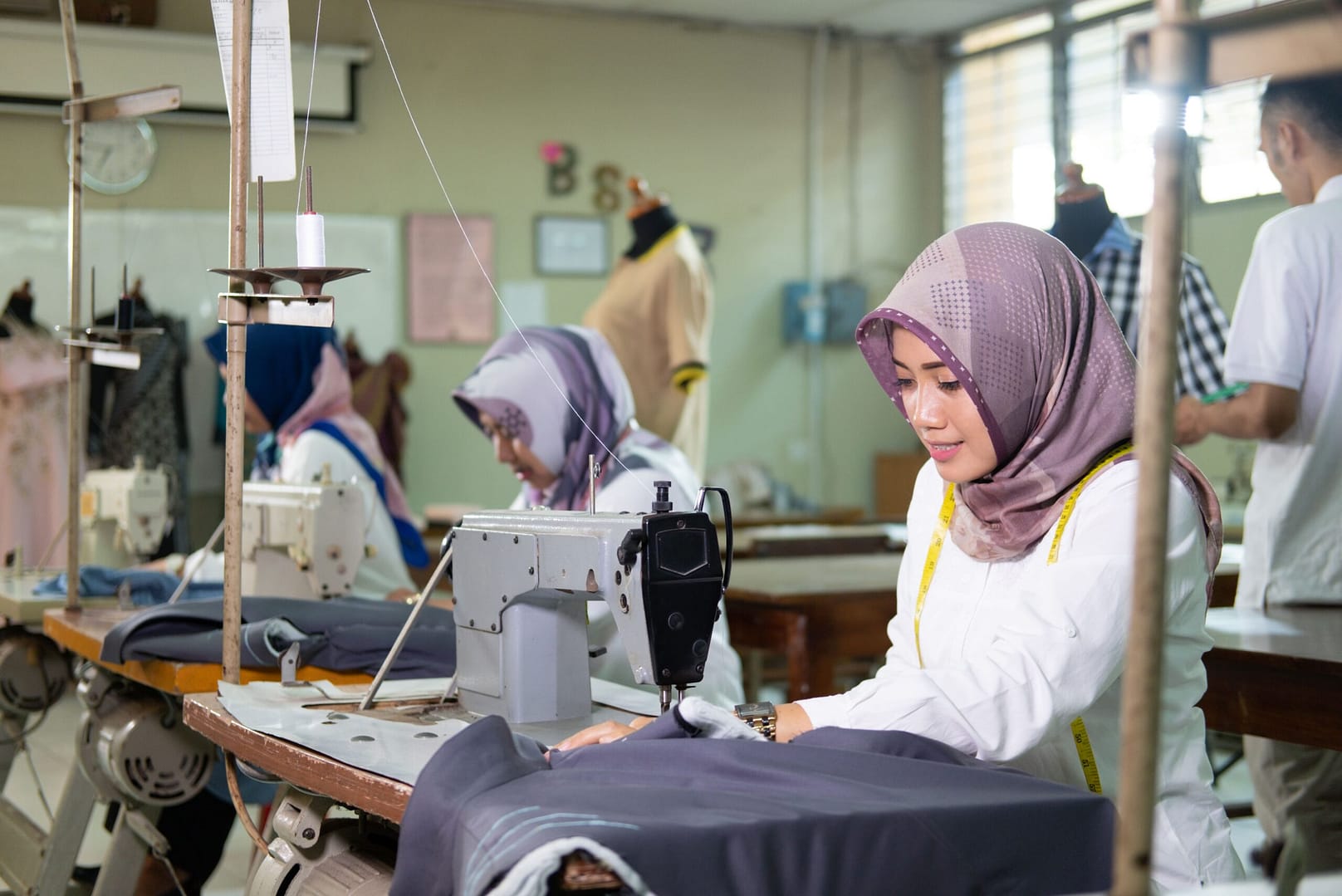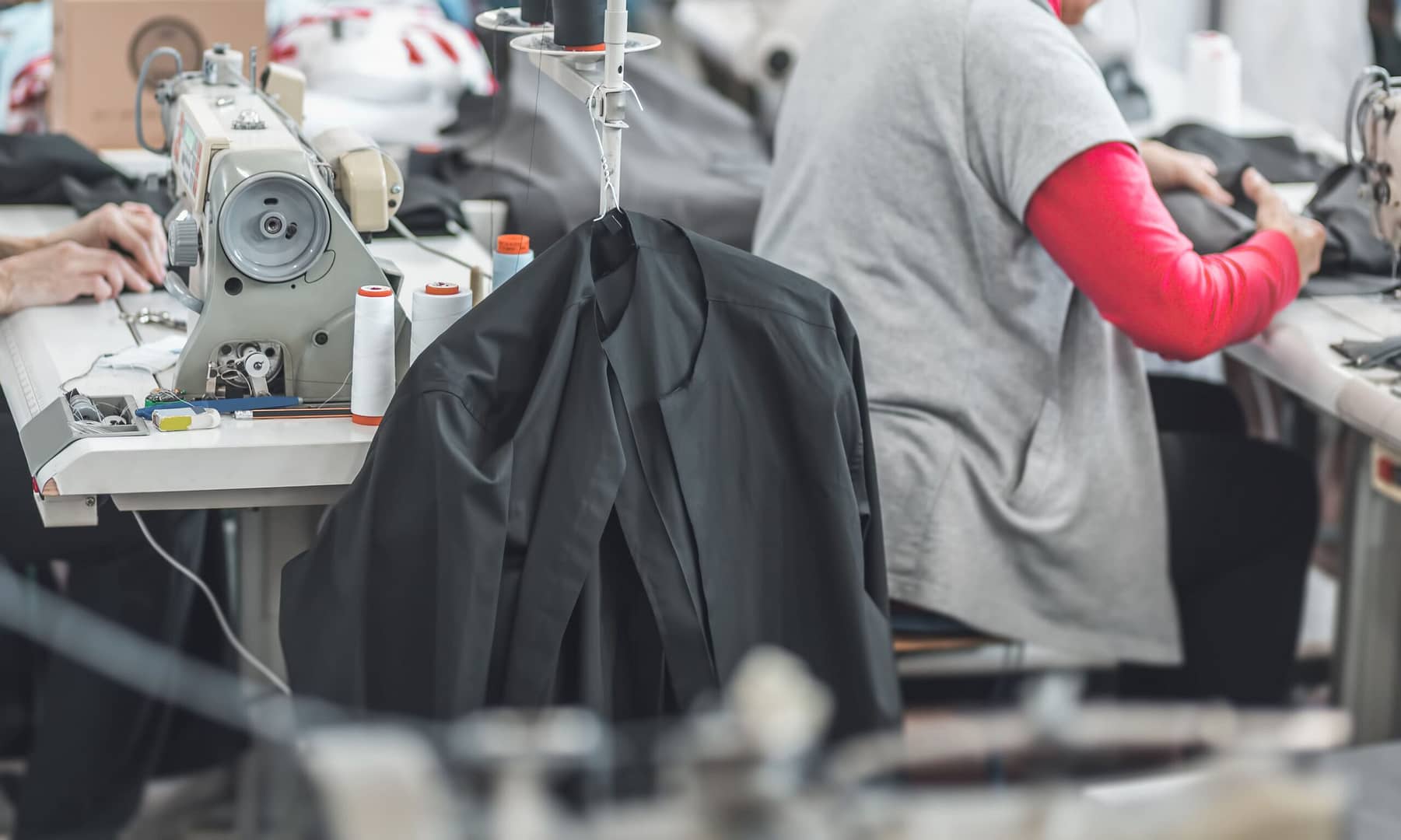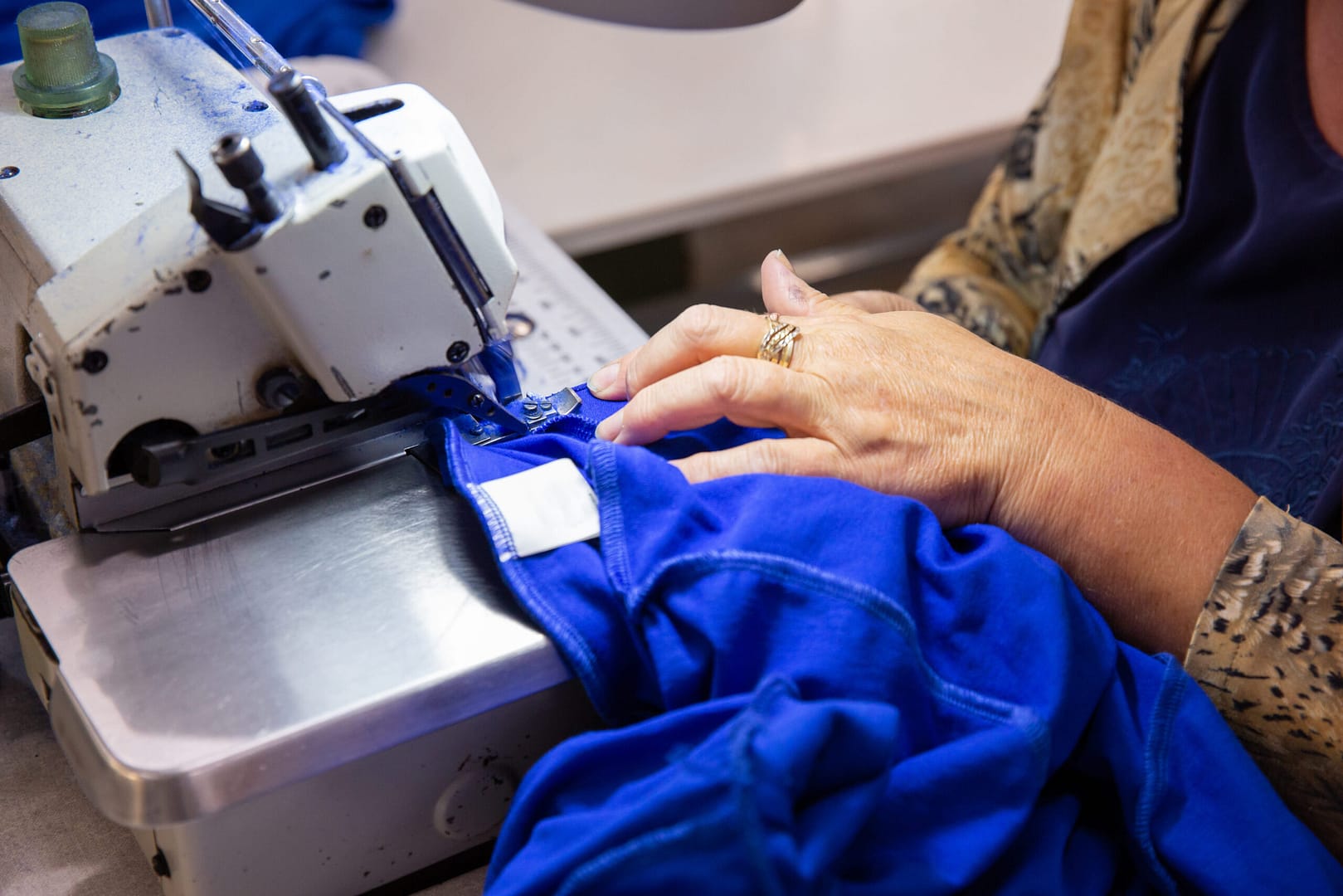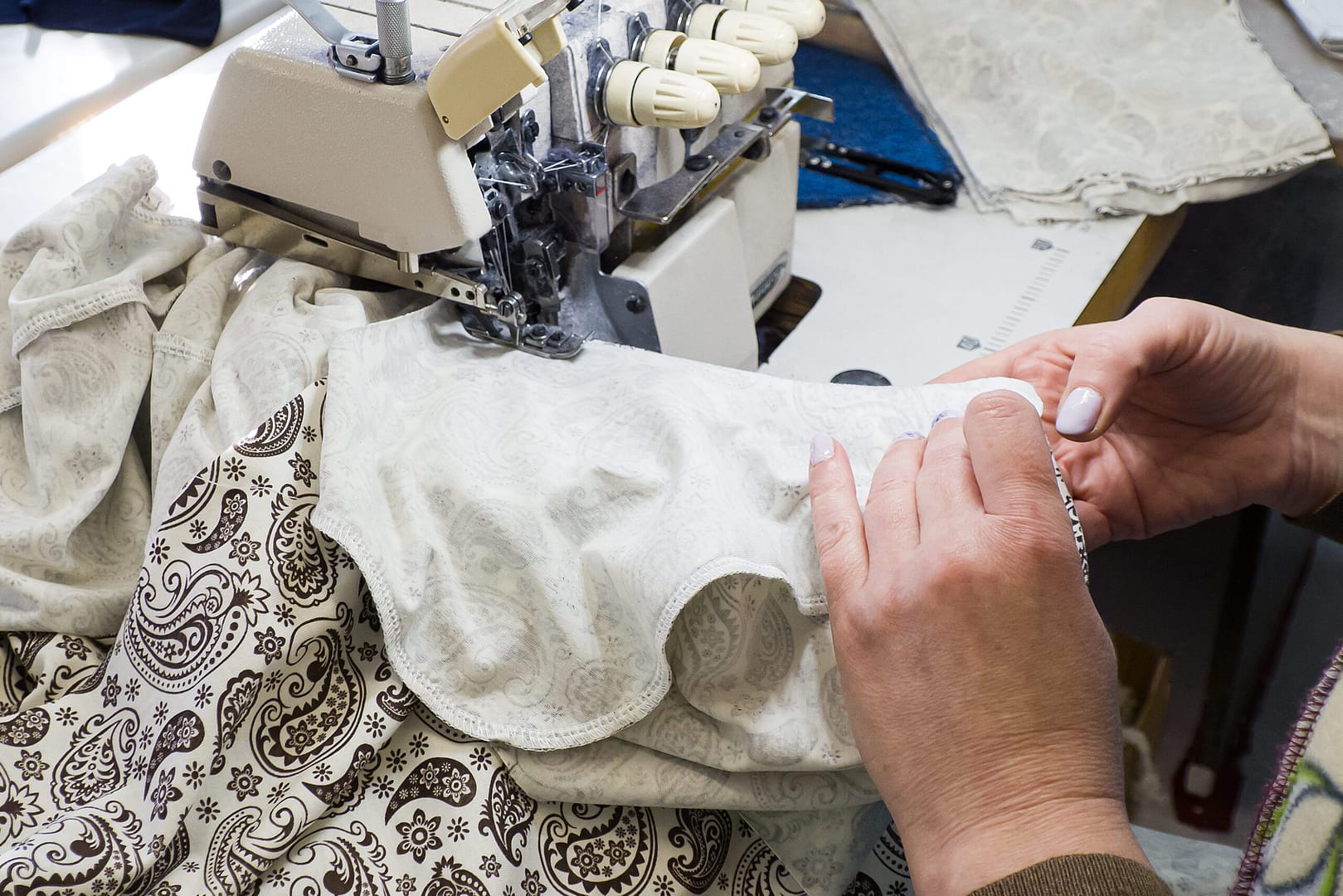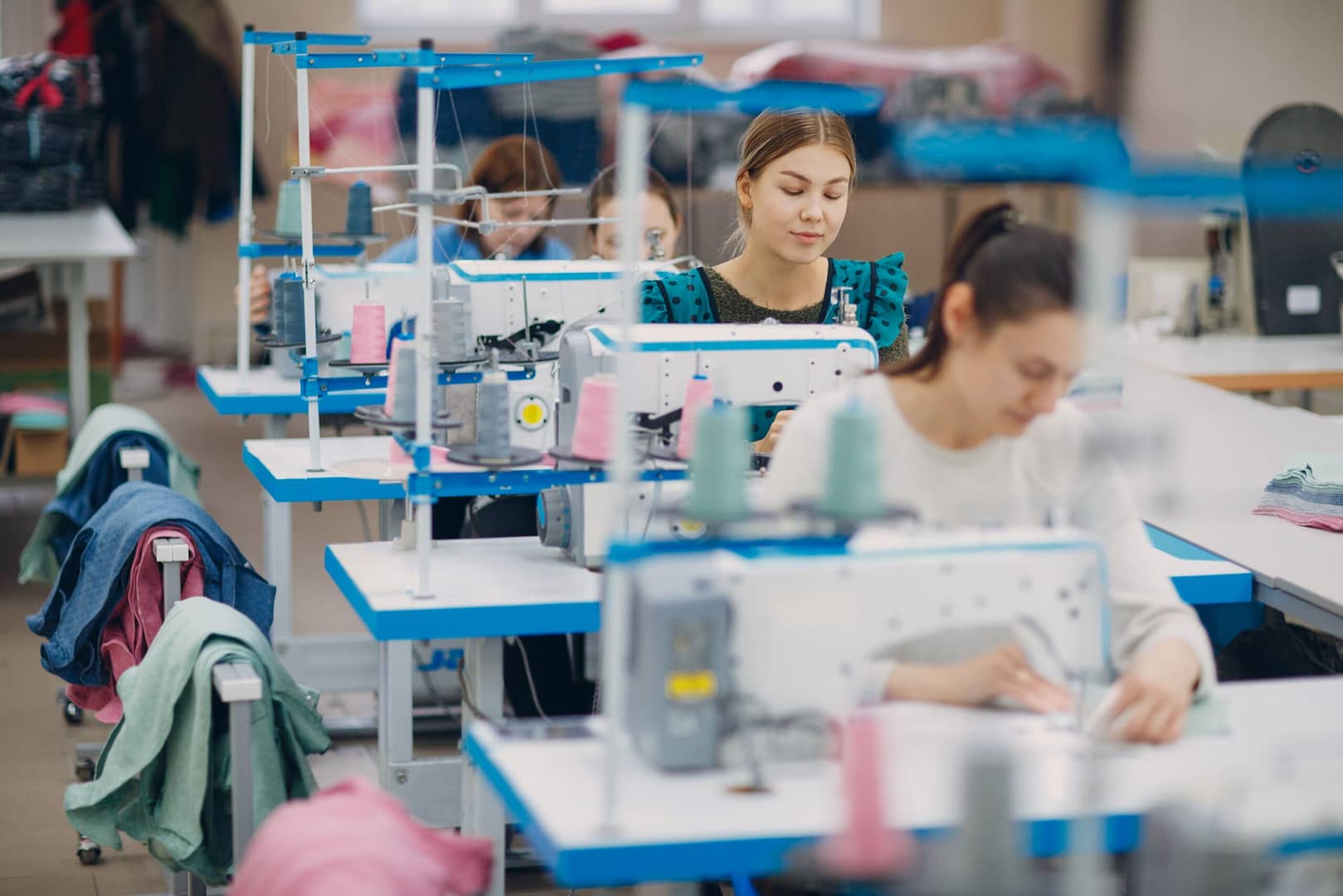Creating a T-shirt that becomes a bestseller is an art that involves balancing quality, style, and timing. Behind every successful garment that flies off the shelves lies a combination of thoughtful design, precise manufacturing, and effective market targeting. The difference between an average T-shirt and a best-selling one can be traced back to the details of its production.
In this article, we take an inside look at how Valtin Apparel, based in Guangzhou, China, approaches the T-shirt manufacturing process to ensure our products are not just good, but exceptional. From design conception to the final touches, we will reveal each step that transforms a simple idea into a T-shirt that people love to buy and wear.
Whether you’re a brand owner looking to enter the clothing market or an experienced distributor aiming to improve your product offering, understanding this process will give you insights on how to deliver the kind of quality that keeps customers coming back.
Step 1: Market Research and Design
The journey to manufacturing a best-selling T-shirt begins long before the fabric is cut and sewn—it starts with understanding what your target audience wants. Market research is the cornerstone of creating T-shirts that resonate with customers and become top sellers. Let’s explore how the right research and design processes lay a solid foundation for success.
Understanding Market Trends and Consumer Preferences
To manufacture T-shirts that sell out, the first step is to deeply understand your target audience. This involves researching current fashion trends, analyzing what’s popular among specific demographics, and finding gaps in the market. Identifying what resonates with customers—such as casual but trendy designs, comfortable fabrics, and long-lasting quality—can make all the difference.
Valtin Apparel works closely with clients to gather insights on the latest trends. This involves analyzing popular social media influencers, observing what’s selling in stores, and paying attention to seasonal preferences. The goal is to align the designs with what customers are actively searching for. Are graphic tees trending? Are minimalist, solid-colored designs the current favorite? By staying ahead of these trends, we help clients deliver exactly what their customers want.
Working with Designers to Create Appealing Styles

Once you’ve gathered insights, the next step is to bring these ideas to life. This is where the design team steps in. Collaborating with professional designers ensures that your ideas are transformed into visually appealing T-shirts that stand out in the market. Clients might have a theme or vision for their brand, and our design team is here to help refine those ideas into market-ready products.
Our design team can assist with every aspect of T-shirt creation, from selecting the right colors and graphics to determining the cut and fit of the shirt. Customization is key here—clients can adjust the design based on their specific needs, such as adding logos, unique artwork, or even slogans that speak directly to their target audience. A T-shirt that connects on an emotional level is far more likely to become a bestseller.
The Role of Customization in Attracting Specific Target Markets
Customization is often the key to standing out in a crowded market. Valtin Apparel offers a range of customizable options, including logo printing, fabric choices, and garment cuts. For example, some brands may wish to provide their customers with T-shirts in two different fits—one for an active look and another for a more relaxed feel. By allowing such flexibility, the manufacturing process can align perfectly with the unique identity of each brand.
Customization also speaks directly to consumer preference. Customers feel more attached to a garment that’s been tailored to their style and fit. Whether it’s a trendy oversized tee or a more fitted classic look, giving buyers choices can boost the appeal of the product and ultimately lead to increased sales.
Developing Designs That Meet Market Demands
For new brands, striking the right balance between being on-trend and offering something unique is crucial. It’s important to identify styles that maximize value—such as selecting a high-quality cotton blend that provides softness and durability without inflating costs.
Valtin Apparel partners with clients to provide not only design expertise but also valuable market insights that help them navigate the complexities of consumer demands. We focus on achieving a balance between offering competitive pricing and maintaining a high standard of quality, ensuring that the designs are both affordable and appealing—key factors that increase the chances of these T-shirts becoming bestsellers.
Step 2: Sourcing Fabrics and Materials
Once the design is finalized, the next crucial step in creating a best-selling T-shirt is sourcing the right fabrics and materials. The quality of the fabric not only affects the comfort and durability of the T-shirt but also plays a significant role in defining its overall appeal. Selecting the right materials is essential to ensure that the T-shirt meets customer expectations and sets the stage for success in the market.
Choosing the Right Fabric: Cotton, Blends, and Sustainable Options
The fabric is the foundation of any T-shirt, and choosing the right type is essential for creating a product that sells. Below are some of the most popular fabric options for T-shirts and their specific attributes:
1. 100% Cotton

• Description: Cotton is the most popular choice for T-shirts because of its softness, breathability, and natural feel. It is comfortable to wear and can be found in various weights and textures.
• Benefits: Cotton is hypoallergenic and ideal for everyday use. It is great for customers looking for comfort and breathability, which makes it particularly suitable for warmer climates.
• Applications: Best suited for classic, casual T-shirts, promotional wear, and basic tees that are meant to feel natural and airy.
• Considerations: Cotton can shrink if not pre-treated, and low-quality cotton may tend to lose its shape over time. Using high-quality, pre-shrunk cotton mitigates these issues.
2. Combed Cotton
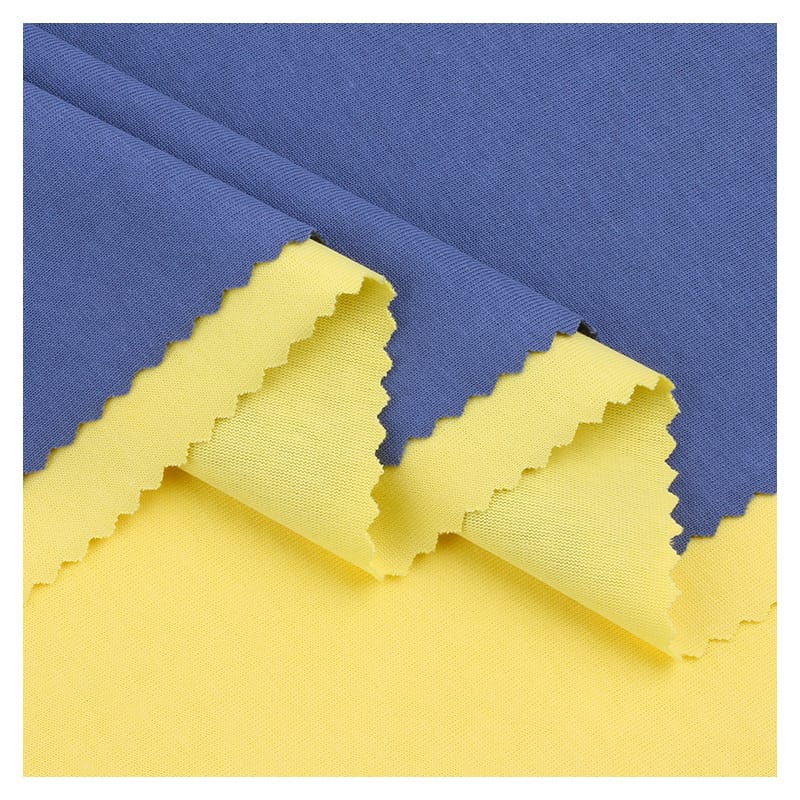
• Description: Combed cotton is a premium version of regular cotton that has undergone a combing process to remove impurities and short fibers.
• Benefits: The result is a stronger, softer, and more luxurious fabric that has a smooth finish. It’s excellent for high-quality T-shirts where softness is a major selling point.
• Applications: Perfect for premium T-shirts, upscale casual wear, and products marketed toward a more discerning audience.
3. Cotton Blends (e.g., Cotton-Polyester Blend)
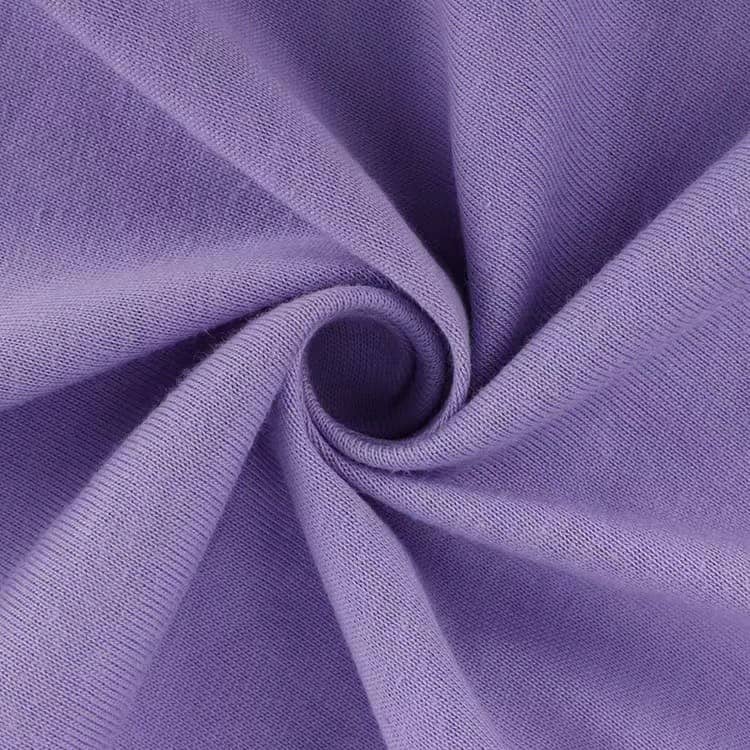
• Description: Cotton blends combine the natural comfort of cotton with the durability and resistance to wrinkling and shrinking that polyester provides. A common ratio is a 50/50 blend, but other variations like 60/40 are also popular.
• Benefits: The blend improves the fabric’s durability while maintaining a soft feel. It also tends to be less expensive than 100% cotton and has better color retention, making it ideal for printed designs.
• Applications: Widely used in everyday T-shirts, athletic wear, and corporate promotional items. Ideal for designs that include detailed screen printing or vibrant colors.
• Considerations: The inclusion of polyester can sometimes reduce breathability, but modern blends often mitigate this with advanced treatments.
4. Tri-Blend (Cotton, Polyester, Rayon)
• Description: A tri-blend is typically a mixture of cotton, polyester, and rayon. This fabric has a unique feel due to the combination of all three fibers, making it incredibly soft and flexible.
• Benefits: Tri-blend T-shirts are lightweight, have excellent drape, and provide a vintage look with a slightly heathered appearance. They offer superior comfort and tend to fit in a way that contours to the body.
• Applications: Perfect for fashionable T-shirts that aim to achieve a vintage or premium look. Popular for lifestyle brands and casual streetwear.
• Considerations: Tri-blend fabrics may not be as durable as cotton-poly blends but make up for it with style and comfort. They tend to be on the pricier side due to the combination of materials.
5. Organic Cotton
• Description: Organic cotton is grown without the use of harmful chemicals and pesticides. It’s a great choice for brands that prioritize sustainability and want to offer a more eco-conscious product.
• Benefits: Soft and breathable like regular cotton, but with the added advantage of being environmentally friendly. Many consumers are willing to pay a premium for organic cotton due to its positive environmental impact.
• Applications: Suitable for environmentally-conscious brands, premium casual wear, and customers looking for ethical products.
• Considerations: Organic cotton tends to be more expensive due to the sustainable farming practices involved in its production.
6. Bamboo Fiber
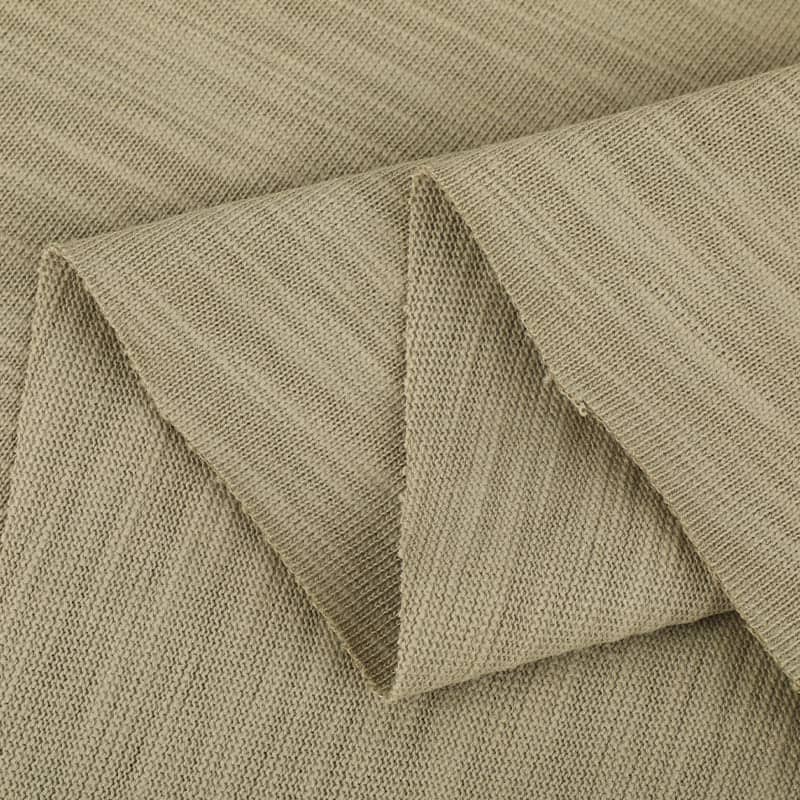
• Description: Bamboo fiber is a relatively new addition to the T-shirt industry and is known for being soft, lightweight, and highly breathable.
• Benefits: Naturally antibacterial, moisture-wicking, and highly breathable, bamboo is an excellent choice for those looking for an alternative to cotton. It’s also a sustainable option since bamboo grows quickly and requires fewer resources.
• Applications: Ideal for activewear, summer T-shirts, and products targeting eco-conscious buyers. Bamboo blends, such as with cotton, are also common.
• Considerations: The production process of bamboo fabrics can vary in terms of environmental impact, so it’s important to choose certified eco-friendly bamboo textiles.
The Significance of Quality in Fabric Selection
Quality is a non-negotiable factor when it comes to making T-shirts that sell out. Customers expect their garments to hold up well after multiple washes, retain their original softness, and maintain their fit. Low-quality fabrics can lead to problems such as shrinkage, pilling, or fading, all of which can significantly affect a brand’s reputation and lead to loss of repeat customers.
At Valtin Apparel, we ensure that the fabrics we source are not only comfortable but also meet strict quality standards. This includes testing for durability, colorfastness, and overall performance. Selecting fabrics that stand the test of time helps build brand loyalty and encourages word-of-mouth marketing—one of the strongest tools for achieving best-seller status.
Aligning Fabric Selection with Customer Expectations for Comfort and Durability
Fabric selection must align with the target audience’s expectations. Different demographics may prioritize different attributes: some consumers look for ultra-soft comfort, while others may prioritize moisture-wicking properties or elasticity. For instance:
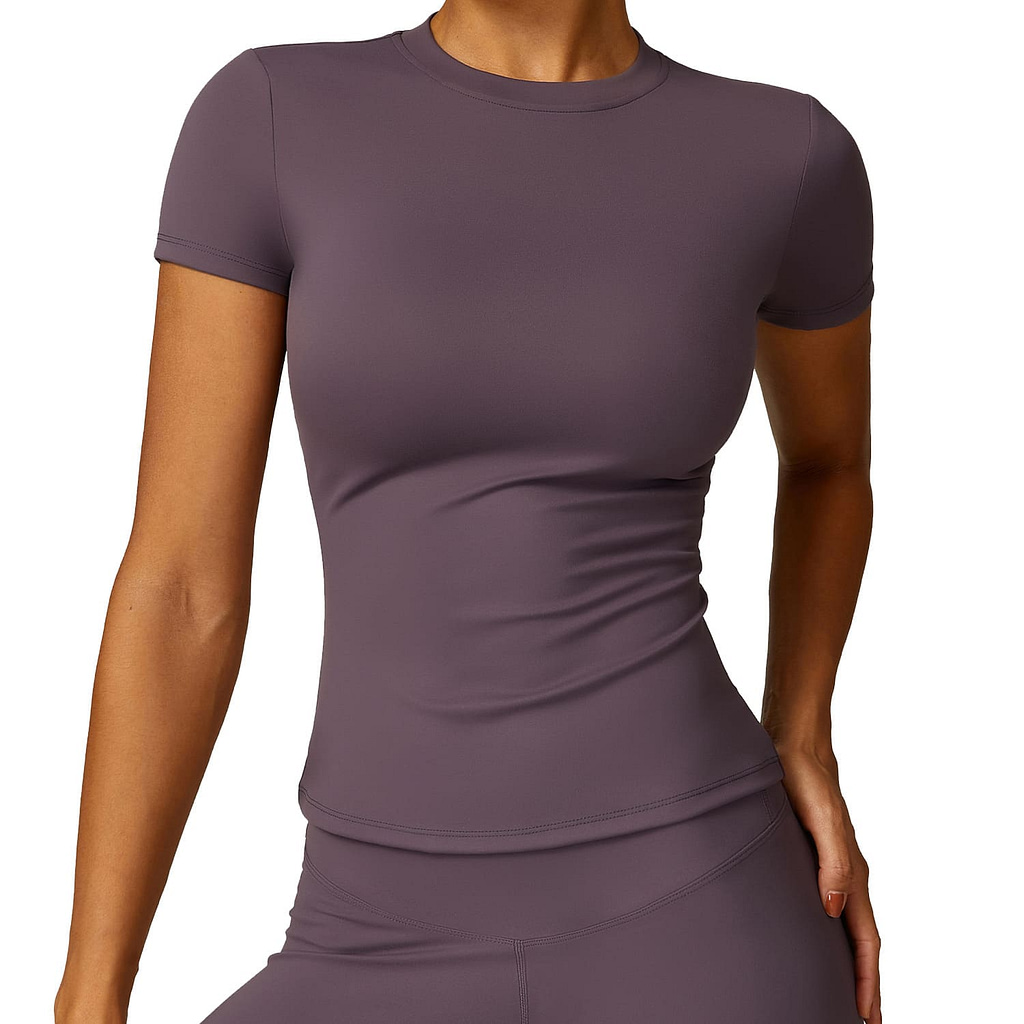
• Activewear T-Shirts: Require materials that manage sweat effectively, like polyester blends or bamboo fiber.
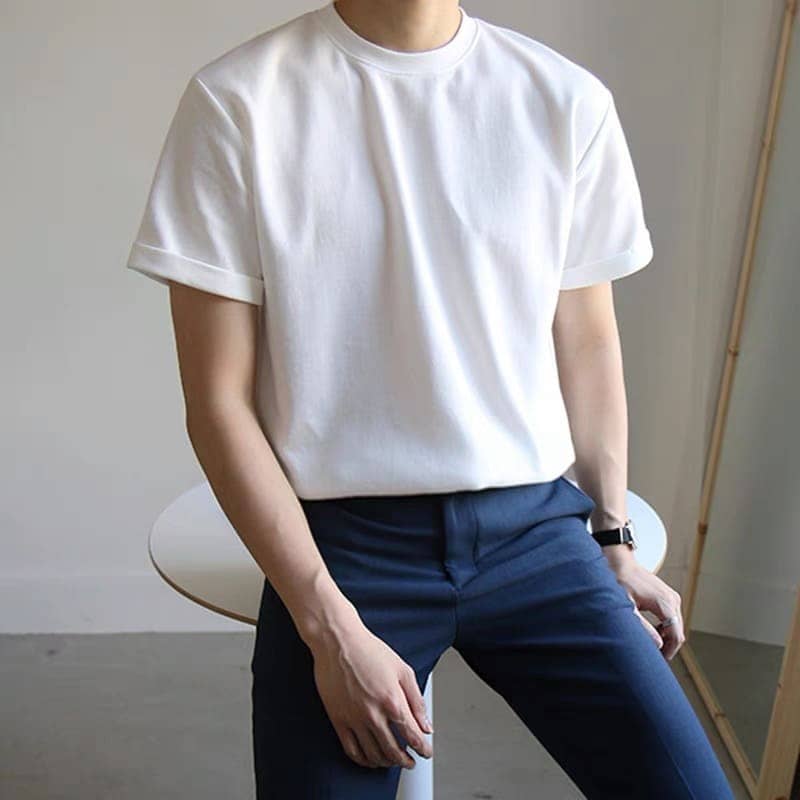
• Casual Lifestyle T-Shirts: Should be comfortable, breathable, and stylish, often made from combed cotton or cotton-poly blends.
• Premium Market T-Shirts: Often use organic cotton or tri-blend fabrics to provide a soft, luxurious feel that appeals to a discerning audience.
We work closely with our clients to understand their customers’ needs and select fabrics accordingly. The goal is to align every aspect of the fabric—its weight, finish, and texture—with what the brand promises to deliver, ensuring a high level of customer satisfaction.
Access to a Vast Selection of Materials
One of the unique strengths of Valtin Apparel is our proximity to China’s largest fabric market. This allows us to access a vast array of fabrics at competitive prices. Whether you need classic, high-quality cotton or a special custom order like dyed fabrics with a particular finish, we can source it. This flexibility helps keep costs manageable while still offering high-quality products, making it easier for our clients to maintain competitive price points without compromising on the quality of their T-shirts.
The right fabric makes all the difference in whether a T-shirt ends up at the back of a closet or becomes a customer’s go-to favorite. Sourcing materials that align with market expectations and ensuring their quality are the building blocks of manufacturing T-shirts that not only sell but lead to repeat purchases and brand loyalty.
Step 3: Pattern Making and Prototyping
After selecting the right fabric, the next crucial step in the T-shirt manufacturing process is pattern making and prototyping. This stage turns a design concept into a tangible product, ensuring that the fit, cut, and construction of the T-shirt meet both design expectations and customer needs. A well-executed pattern and a carefully crafted prototype are essential for producing a high-quality T-shirt that looks good, fits well, and can be manufactured at scale.
Creating Patterns That Fit Well
Pattern making is the technical process of creating a blueprint for each piece of the T-shirt, including the front, back, sleeves, and neck. The pattern determines how the fabric will be cut and sewn to form the final product. A good pattern is critical to ensuring that the T-shirt fits comfortably and flatters the body shape of the intended audience.
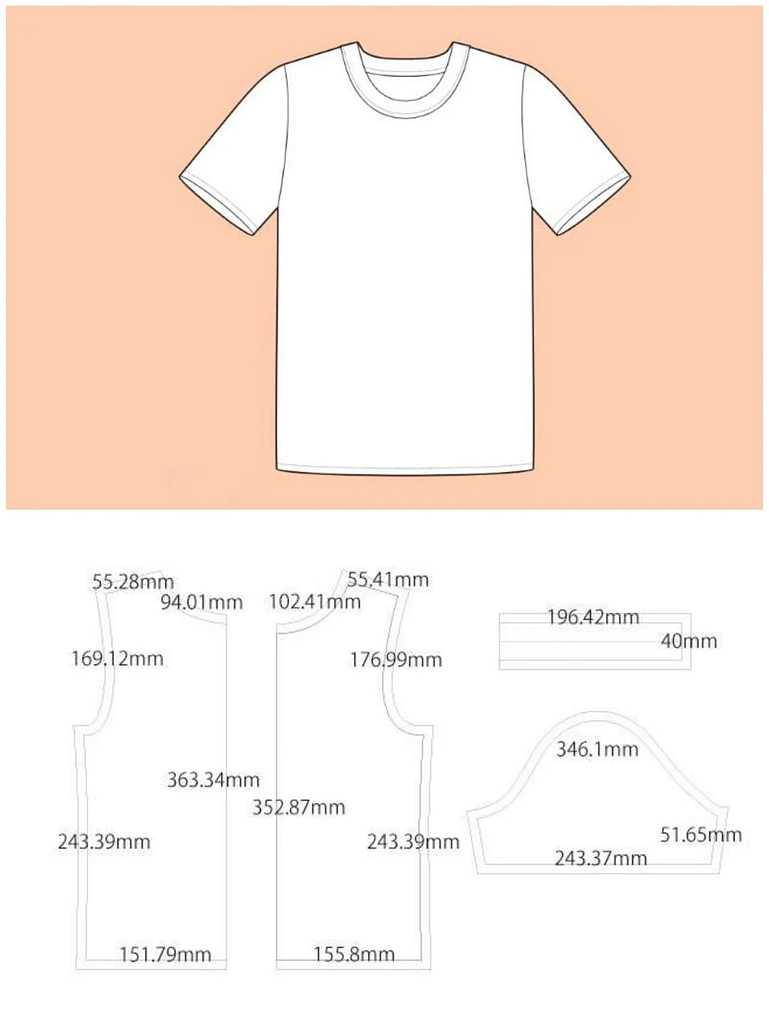
At Valtin Apparel, our experienced pattern makers work with brands to ensure the fit aligns with their target market. T-shirt fit can vary greatly depending on the intended style. For example:
• Relaxed Fit: Often used for casual or streetwear styles, this fit has a looser, more comfortable cut that allows for freedom of movement.
• Slim Fit: A more tailored cut that hugs the body, often popular in fashion-forward or athletic brands.
• Oversized Fit: A trendy style that offers an exaggerated, roomy fit, frequently seen in urban and youth fashion markets.
Accurate measurements are critical to creating a pattern that delivers the desired fit. Whether you are creating a basic crew neck or a unique design with special cuts, the precision of the pattern will directly impact how the final product looks and feels. This attention to detail is especially important when producing large quantities, as even small inconsistencies in the pattern can lead to costly production errors.
Importance of Prototyping and the Sample Approval Process
Before moving into bulk production, a prototype—or sample—is created based on the approved pattern and fabric selection. Prototyping allows both the manufacturer and the client to assess the T-shirt’s fit, comfort, and overall quality before committing to full-scale production. This stage is critical because it provides the opportunity to fine-tune the product and address any issues that may arise.
Here’s how the prototyping process works:
1. First Sample Creation: The first sample is made using the exact pattern and chosen fabric. This prototype is a working model of the final product, allowing you to see how the T-shirt looks and feels in real life.
2. Evaluation and Feedback: Once the sample is completed, it is reviewed by the client for feedback. This is where any adjustments to fit, design, or details (such as sleeve length, neckline shape, or label placement) are made.
3. Revisions (if necessary): If there are any issues with the initial sample, revisions are made. The manufacturer adjusts the pattern, fabric, or construction as needed to address any concerns raised during the evaluation.
4. Final Approval: Once all adjustments have been made and the client is satisfied, the final sample is approved for bulk production. This ensures that the production run will meet the desired specifications.
Valtin Apparel provides clear communication throughout the prototyping process, ensuring that our clients are fully informed at every stage. By offering sample production in just 10-14 days, we help clients avoid long delays, allowing them to move efficiently from concept to finished product.
Managing Customer Expectations During the Sample Process
The prototyping phase is also the time to manage client expectations. Some brands may have a clear vision for their T-shirts but lack technical knowledge about garment construction. It’s important to set realistic goals during this stage, especially when it comes to fabric behavior, stitching techniques, and design features that might be difficult to replicate on a large scale.
For example, certain fabrics may stretch differently after being cut and sewn, which can affect the fit. We communicate these possibilities clearly to our clients and offer alternative suggestions when necessary to ensure the final product meets expectations without compromising quality.
Finalizing the Production-Ready Prototype
Once the prototype is approved, the final step before production is to create the production-ready version of the T-shirt. This version includes any final design tweaks, as well as placement for labels, care tags, and any other branding elements. It is crucial that this version is perfect, as it will serve as the reference for the entire production run.
At Valtin Apparel, we prioritize quality and precision at this stage to ensure that the bulk production T-shirts are consistent with the approved prototype. Our goal is to guarantee that the final product meets the exact specifications that the client has signed off on, from the fit and fabric feel to the smallest design details.
Step 4: Cutting and Printing
Once the pattern and prototype are finalized, the next phase in the T-shirt manufacturing process involves cutting the fabric and applying any desired printing or embellishments. Precision and attention to detail at this stage are crucial to ensure that the final product is consistent, high-quality, and aligned with the design specifications. This step transforms the raw materials into the building blocks of the final garment.
Cutting Fabric with Precision
Cutting is one of the most fundamental steps in T-shirt production. It involves laying the fabric flat and using the approved patterns to cut out the individual pieces (such as the front, back, and sleeves) that will later be sewn together. Precision in cutting is critical because inconsistencies at this stage can lead to fitting issues, uneven seams, or fabric waste.

Automated fabric-cutting machines are often employed to handle large production runs efficiently, ensuring each piece is cut exactly to specification. This not only ensures uniformity but also speeds up the production process while minimizing material waste.
Key aspects of cutting:
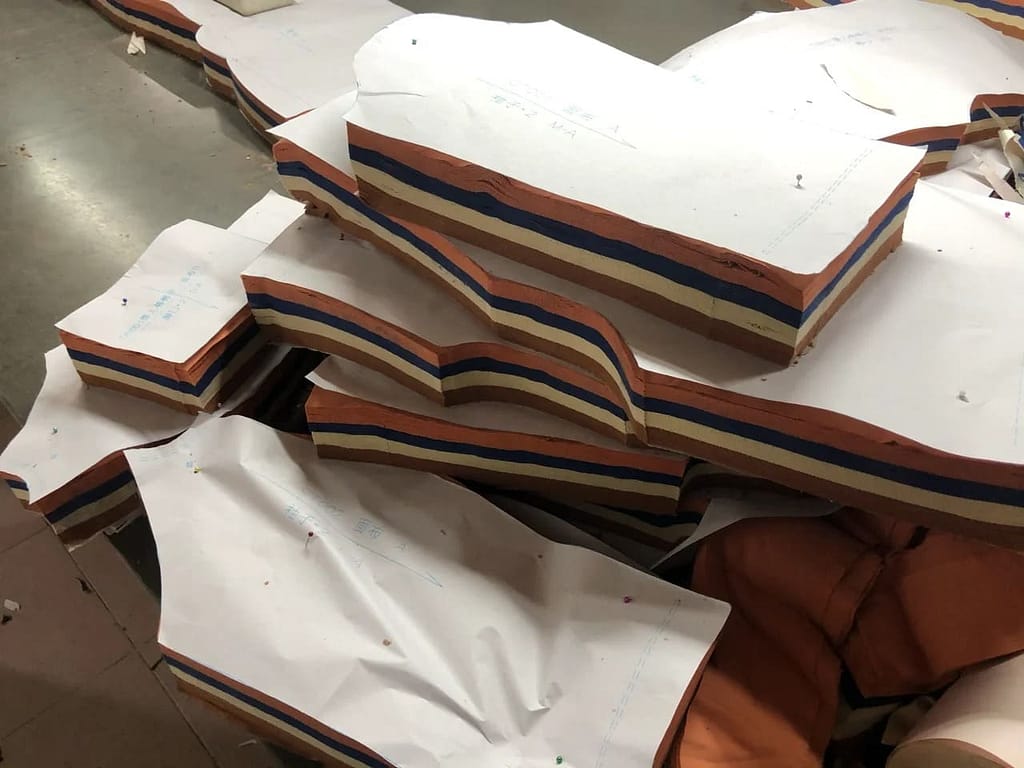
• Layering the Fabric: To increase efficiency, multiple layers of fabric are often stacked and cut at the same time. This method ensures consistency across all pieces in a batch, even in bulk production.
• Handling Different Fabrics: Certain fabrics, like stretchy materials or delicate fabrics, require special handling during the cutting process to avoid distortion or damage. This ensures that even after sewing, the T-shirt retains its intended shape and fit.
Printing Techniques: Screen Printing, Digital Printing, and Heat Transfers
After cutting, the next important step—if the T-shirt design includes graphics, logos, or artwork—is applying prints. There are several methods available for printing on T-shirts, each with its own strengths, depending on the type of design, fabric, and budget. Let’s explore the most popular T-shirt printing techniques:
1. Screen Printing
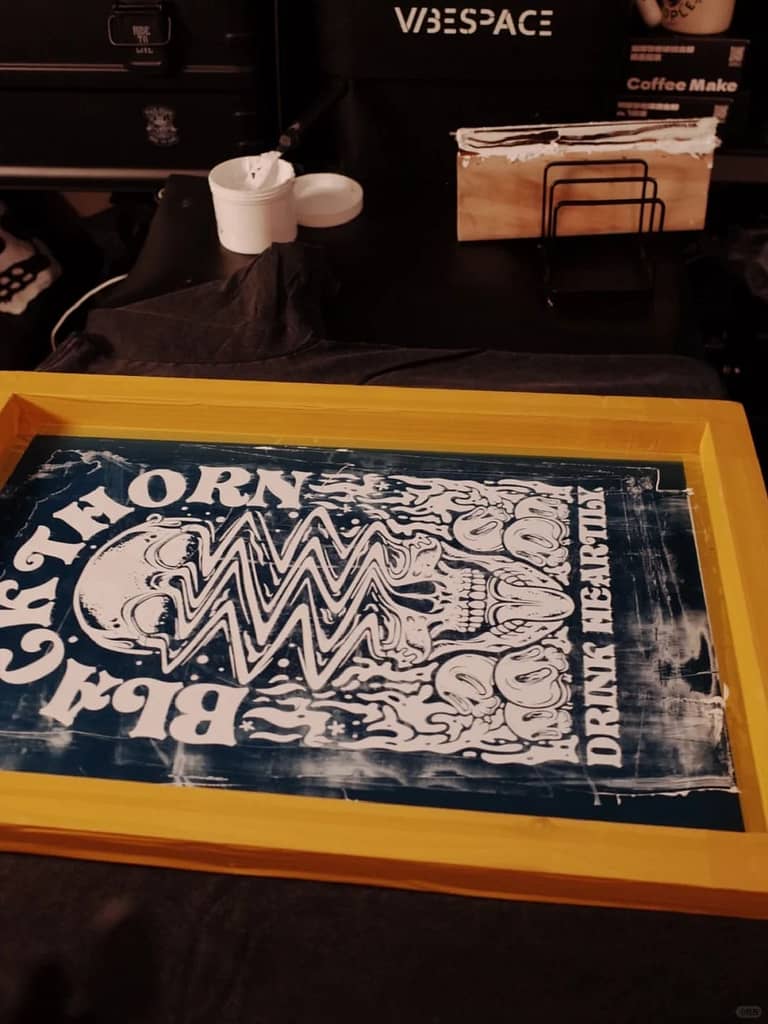
• Description: Screen printing is one of the most widely used and durable printing methods for T-shirts. It involves using a stencil (or “screen”) and pushing ink through the screen onto the fabric. Each color in the design requires its own screen, making this method ideal for simple designs with limited colors.
• Benefits: Screen printing produces vibrant, long-lasting colors that don’t easily fade after washing. It’s a cost-effective option for large production runs and is ideal for bold, solid-color designs.
• Applications: Best suited for large batches of T-shirts with simple logos or designs. It’s commonly used for promotional wear, sports teams, and branded apparel.
• Considerations: While cost-effective for bulk orders, screen printing can become expensive for designs with many colors or for smaller runs, as each screen has to be custom-made.
2. Digital Printing
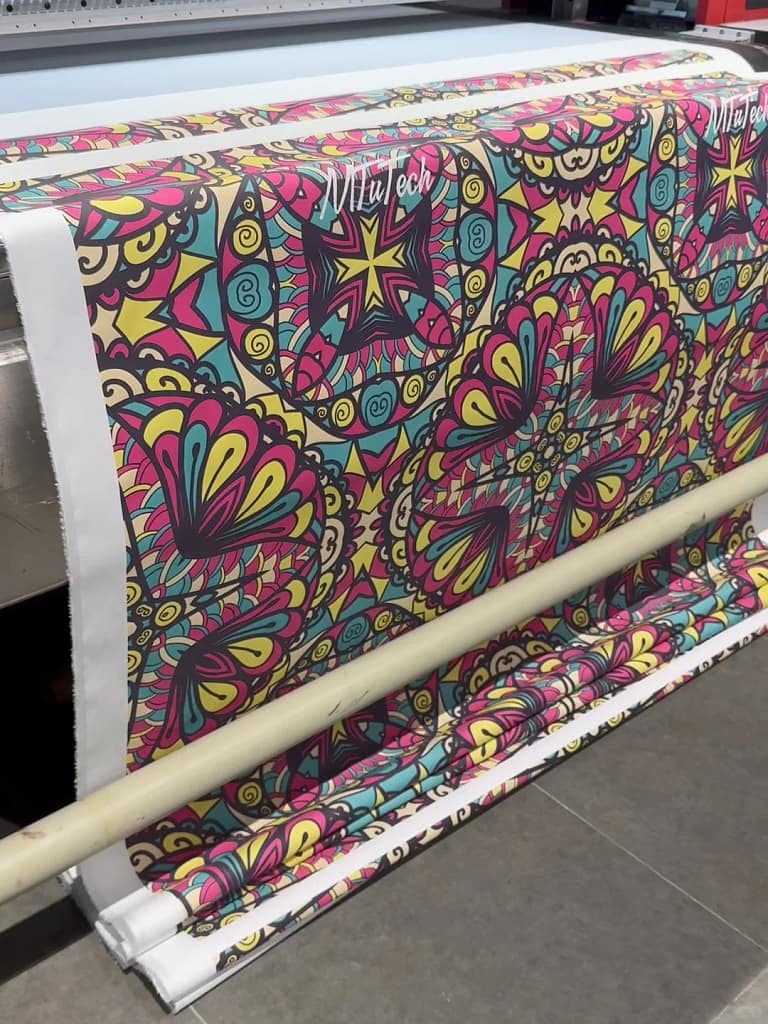
• Description: Direct-to-garment printing involves using a specialized inkjet printer to apply ink directly onto the fabric. This method is perfect for highly detailed or multi-colored designs, including photographs and intricate artwork.
• Benefits: DTG allows for unlimited color options and produces a soft feel since the ink is absorbed directly into the fabric. It’s ideal for small batches or custom orders where a highly detailed design is required.
• Applications: Suitable for small or medium runs of custom T-shirts, especially when dealing with complex or photographic designs. Great for brands offering personalized or one-off designs.
• Considerations: Digital printing can be more expensive per unit for larger orders compared to screen printing, and while it produces excellent detail, it may not be as durable over time as screen printing.
3. Heat Transfer
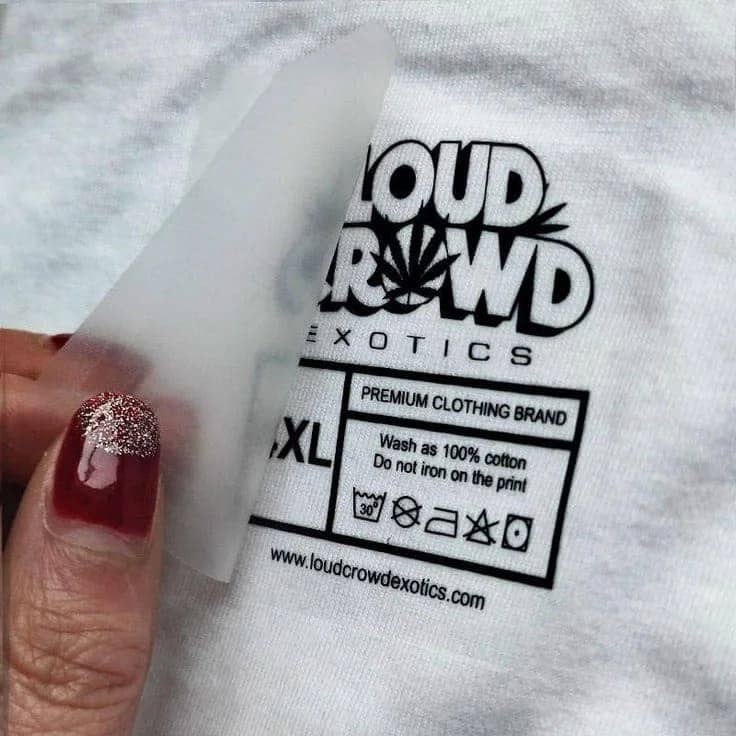
• Description: Heat transfer printing involves printing a design onto special transfer paper, which is then applied to the fabric using heat and pressure. This method can use a variety of materials, including vinyl, plastisol transfers, or sublimation, depending on the fabric and design needs.
• Benefits: Heat transfers allow for high versatility and can be used for both small and large print runs. This method is great for adding logos, names, or numbers to garments, and the setup costs are generally lower than screen printing.
• Applications: Ideal for customized T-shirts, such as sportswear, fashion designs with intricate details, or promotional items. Sublimation heat transfers are particularly effective on polyester fabrics, where the dye fuses into the fibers.
• Considerations: The durability of heat transfer prints varies depending on the type of transfer used, and some transfers may not hold up as well after multiple washes compared to screen or digital printing.
Choosing the Right Printing Method for Your T-Shirt
Choosing the right printing method depends on several factors, including the design’s complexity, the size of the production run, and the type of fabric being used. For example:
• Bold, Simple Designs: Screen printing remains the best option for large quantities where the design is bold, with fewer colors and large areas of ink.
• Highly Detailed Designs: Digital printing is ideal for small to medium runs where detailed graphics, gradients, or photographic images are required.
• Custom and Personalized T-Shirts: Heat transfer printing works well for smaller runs, personalized designs, or items that need individual customization (e.g., adding names or numbers).
At Valtin Apparel, we offer a variety of printing techniques and work closely with our clients to determine the best option based on their design goals, budget, and the intended market. Whether it’s a batch of 200 T-shirts with a simple brand logo or a highly detailed, custom-designed piece, we ensure the final product meets the highest quality standards.
Finalizing the Design with Additional Embellishments
In addition to printing, many brands choose to enhance their T-shirts with extra embellishments, such as:
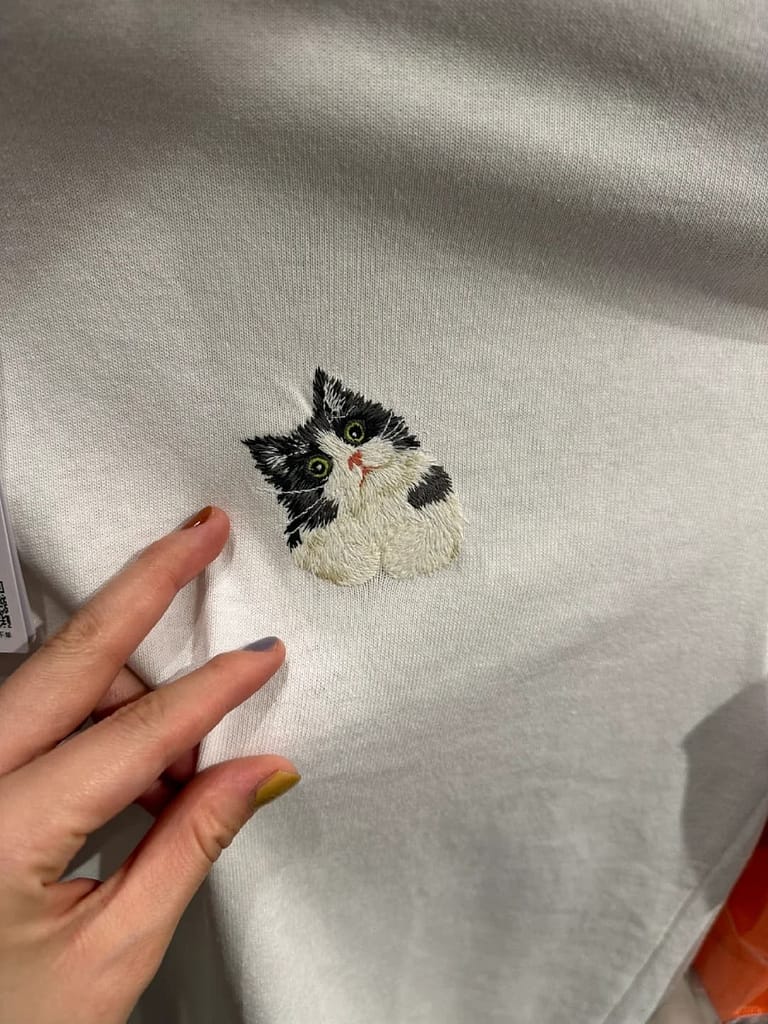
• Embroidery: Ideal for adding a premium touch to logos or brand names. Embroidery is durable and gives a more textured, professional look, commonly used for high-end casual or corporate wear.
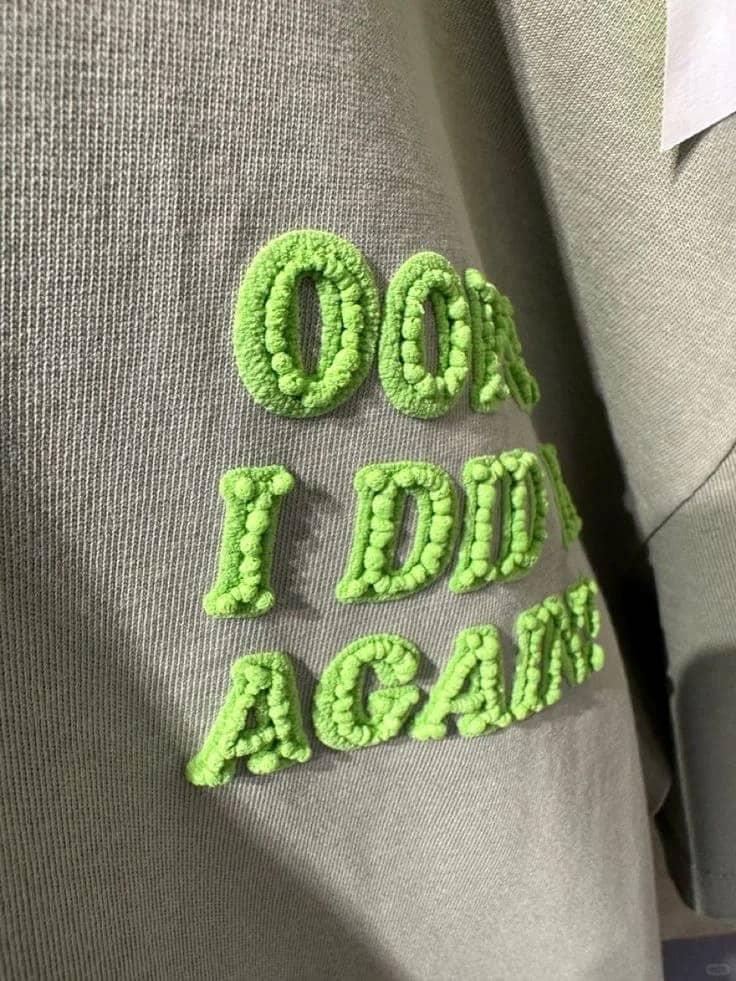
• Appliqué and Patches: These add dimension to T-shirts, making them visually unique and appealing to fashion-forward customers.
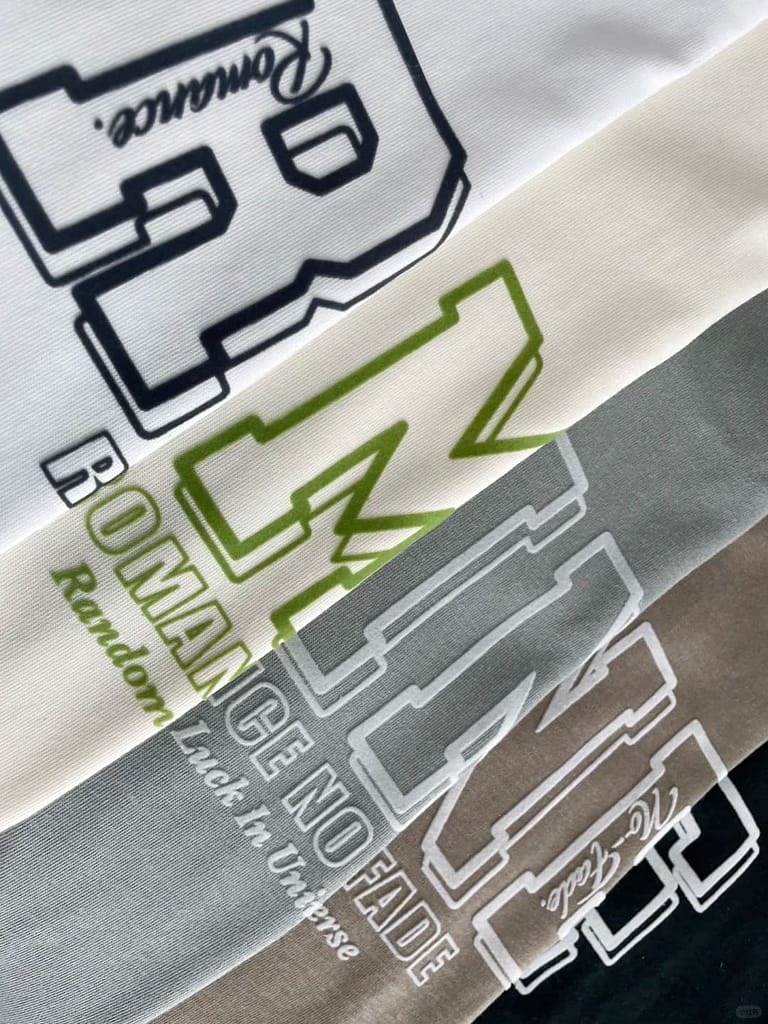
• Foil Printing and Flocking: These specialized techniques create a high-gloss, metallic finish (foil) or a raised, velvety texture (flocking), adding depth and sophistication to the garment.
Step 5: Sewing and Quality Control
Once the fabric has been cut and any necessary prints or embellishments applied, the next step in the T-shirt manufacturing process is sewing. This is where the individual fabric pieces are stitched together to create the final product. However, sewing alone isn’t enough to guarantee quality—this step must be paired with stringent quality control measures to ensure that each T-shirt meets the highest standards before it reaches the customer.
The Sewing Process: Ensuring Consistency and Comfort
The sewing stage is where skilled craftsmanship plays a crucial role. Each piece of fabric—the front, back, sleeves, and neck binding—is carefully sewn together to form the final T-shirt. Precision during this phase is essential to achieving the correct fit and finish.
At Valtin Apparel, we use both automated sewing machines and highly trained technicians to ensure that each seam is sewn perfectly, resulting in a consistent product. Here are the key aspects of the sewing process:
1. Stitching Types
• Overlock Stitch: This is the most common stitch used in T-shirt manufacturing, as it binds the edges of the fabric pieces while preventing fraying. It’s durable and stretches with the fabric, making it ideal for everyday wear.
• Coverstitch: Typically used for hemming the bottom edges and sleeve openings, the coverstitch provides a clean, professional finish and reinforces areas that are prone to wear.
• Straight Stitch: This stitch is used for basic seams where the fabric doesn’t need to stretch. It provides a strong, clean line for joining non-elastic parts of the T-shirt.
• Binding: Necklines and armholes are often finished with a binding stitch, which provides durability and a smooth, polished look.
2. Attention to Detail
• Seam Alignment: Ensuring that seams are perfectly aligned is essential for both aesthetics and comfort. Misaligned seams can create an unprofessional look and may cause discomfort to the wearer.
• Neckline and Sleeve Finishing: Properly sewn necklines and sleeve hems are indicators of high-quality craftsmanship. A well-finished neckline prevents the fabric from stretching out of shape over time, while neat sleeve hems contribute to the overall durability of the T-shirt.
Consistency in stitching is key to producing T-shirts that meet the same standards across large production runs. Automated sewing machines help to maintain uniformity, while trained technicians ensure that even the finest details are handled with care.
Quality Control Checkpoints: Avoiding Issues Like Loose Threads or Poor Stitching
Quality control is integral to the production process, as it ensures that every T-shirt leaving the factory meets the standards expected by the brand and its customers. Valtin Apparel employs a rigorous quality control system at various stages of the production line to catch and correct issues before they affect the final product.
Key quality control checkpoints include:
1. Initial Inspection of Fabric and Cut Pieces
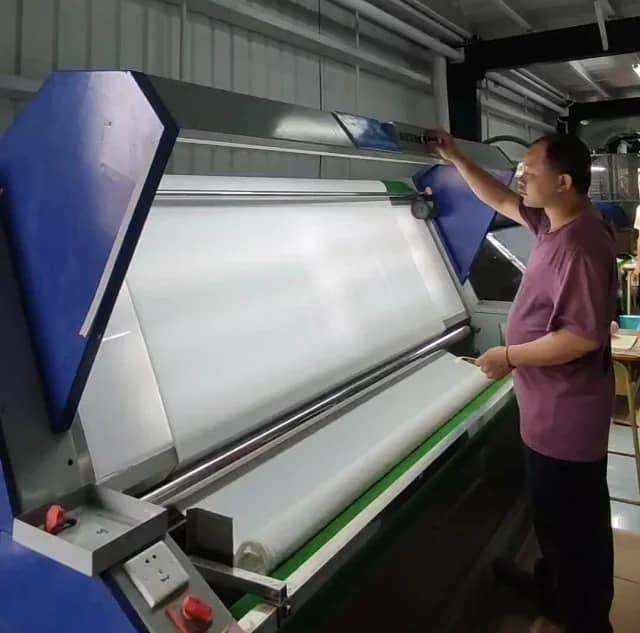
• Before sewing begins, each batch of fabric and cut pieces is inspected for defects, such as tears, holes, or inconsistencies in print or color. This helps avoid producing garments with noticeable flaws.
2. In-Process Checks
• During the sewing process, in-process checks are performed to ensure that stitching is even, seams are aligned, and the garment is coming together according to the pattern. This stage helps catch potential problems early, such as uneven stitching or fabric bunching.
3. Post-Sewing Inspection
• After the T-shirt is fully sewn, a detailed inspection is carried out to check for any loose threads, poorly finished seams, or inconsistent stitching. This is where any minor issues are corrected, such as trimming loose threads or reinforcing weak seams.
4. Final Inspection Before Packaging
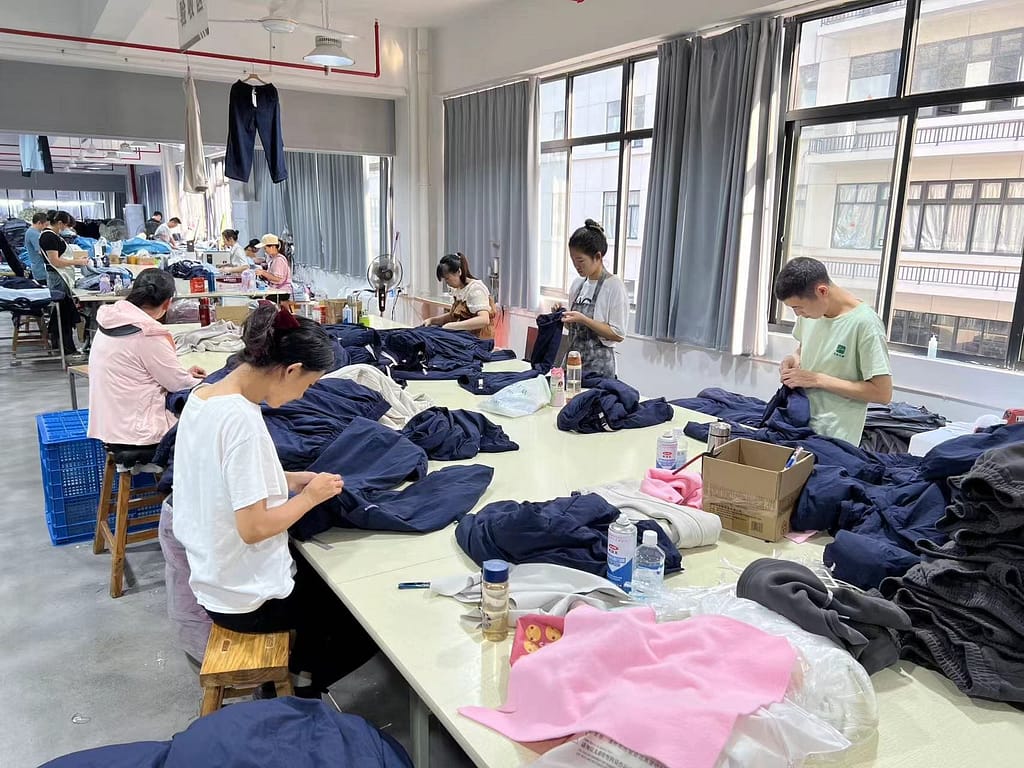
• Before the T-shirts are packaged and prepared for shipping, each one undergoes a final inspection. This includes checking for overall construction quality, ensuring that the printing or embellishments are correctly applied, and verifying that all labels and tags are properly attached.
At Valtin Apparel, we believe in delivering products that exceed customer expectations. Our quality control team carefully examines every garment to ensure that no defects make their way to the customer, helping to build trust and brand loyalty. This attention to detail is especially important for B2B clients who rely on consistency and quality to meet their own customers’ demands.
Meeting Customer Expectations Through Rigorous Quality Inspections
In today’s competitive market, quality is non-negotiable. Customers expect their T-shirts to not only look great but also hold up to repeated wear and washing. A poorly constructed T-shirt that falls apart or loses its shape after a few washes can seriously damage a brand’s reputation, leading to lost sales and customer dissatisfaction.
By adhering to strict quality control standards, we ensure that every T-shirt we produce meets high expectations in terms of:
• Durability: Ensuring the T-shirt holds up after multiple wears and washes without losing its shape or experiencing stitching issues.
• Comfort: Smooth seams and well-finished edges provide comfort to the wearer, contributing to overall customer satisfaction.
• Aesthetics: Clean, straight stitching and well-aligned seams give the T-shirt a polished, professional look that adds to its perceived value.
At Valtin Apparel, we understand that producing T-shirts that consistently meet these standards is key to building long-term relationships with our clients. By maintaining high levels of quality, we help our clients avoid product returns or complaints, ensuring a positive experience for the end consumer.
Step 6: Adding Labels, Tags, and Custom Features
Once the T-shirt has been sewn and passed through quality control, the next step is to add labels, tags, and any custom features that help give the product a distinct, branded touch. These final details not only complete the T-shirt but also play a crucial role in brand identity and customer experience. A well-executed label or tag can elevate the perceived value of the product, while custom features can set the T-shirt apart from competitors.
Custom Labels: Enhancing Brand Recognition
Labels are an important part of a garment’s identity, as they provide key information about the brand, size, care instructions, and sometimes even the country of origin. Custom labels also enhance the overall branding experience, helping consumers immediately recognize the product as part of a specific brand.
There are various types of labels that can be added to a T-shirt, including:
1. Woven Labels
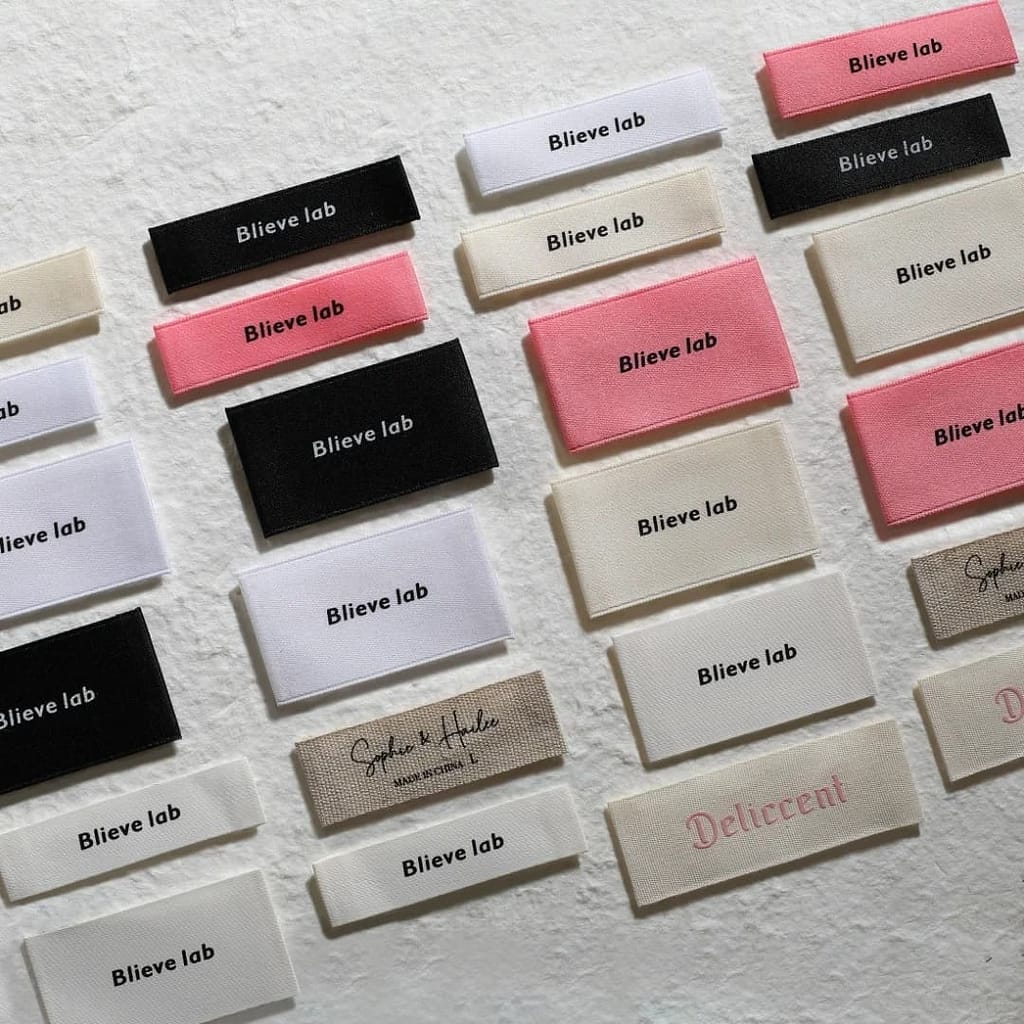
• Description: Woven labels are created by weaving the brand name or logo into the fabric, typically sewn into the neckline or side seam of the T-shirt.
• Benefits: Woven labels are durable, high-quality, and give a premium feel to the garment. They are ideal for brands looking to reinforce their identity through subtle but impactful branding.
• Applications: Common in high-end or premium T-shirts, woven labels enhance the overall look of the product while being comfortable for the wearer.
2. Printed Labels (Tagless)
• Description: Printed labels are applied directly to the inside of the T-shirt, usually around the neckline, using heat transfer printing techniques.
• Benefits: These labels are popular because they eliminate the need for physical tags, making them more comfortable to wear. They also prevent issues like irritation from fabric tags.
• Applications: Often used in casual or activewear brands that prioritize comfort. Tagless labels give a clean, minimalist look while still providing essential information such as size and care instructions.
3. Hang Tags
• Description: Hang tags are temporary, removable tags attached to the garment by a string or plastic loop. They usually include branding, pricing, and marketing information.
• Benefits: Hang tags serve as an additional branding tool, often printed with the brand’s logo, message, or even eco-friendly credentials. They can also provide a personal touch with special marketing messages or product descriptions.
• Applications: Hang tags are a great way to create a lasting impression at the point of sale. They’re especially effective for retail environments where visual branding is important for catching consumers’ attention.
4. Care Labels
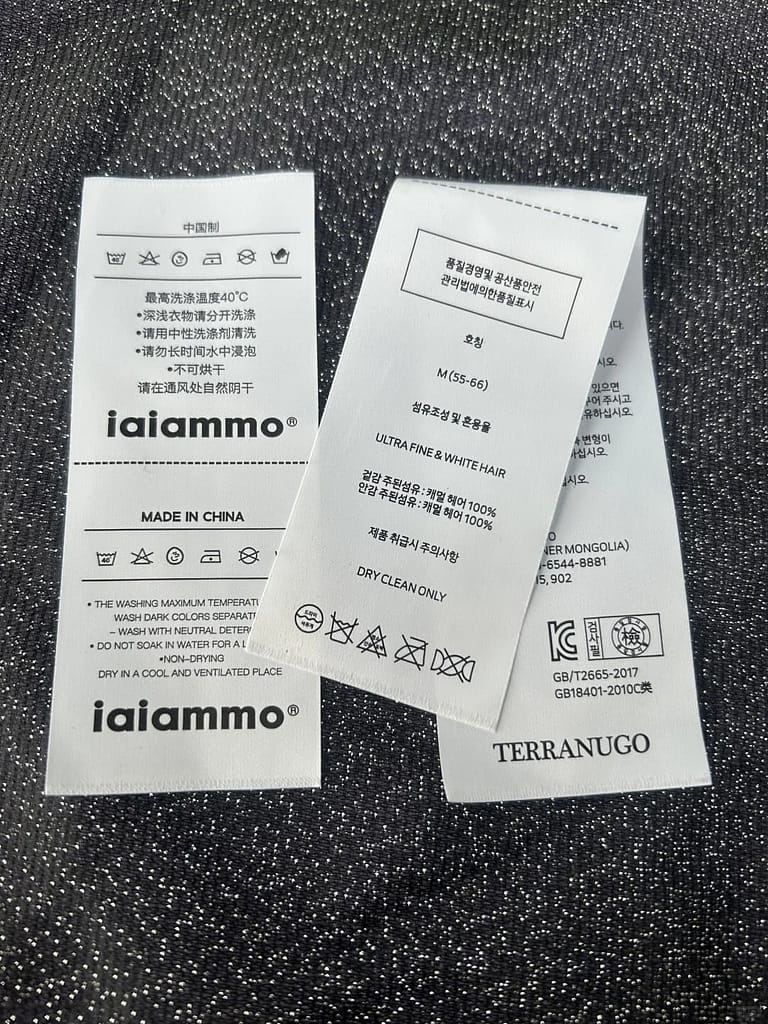
• Description: Care labels provide washing and care instructions for the garment, ensuring that customers know how to properly maintain their T-shirts.
• Benefits: Proper care instructions help customers prolong the life of their T-shirts, which leads to greater customer satisfaction. Including information about fabric content (such as “100% organic cotton” or “50% cotton, 50% polyester”) also reinforces the brand’s attention to quality.
• Applications: Care labels are a standard feature for all garments but can be customized to include additional branding or sustainability messages, especially for eco-conscious brands.
Adding Branded Packaging: The Power of Presentation
In addition to labels and tags, packaging plays a significant role in shaping the customer’s perception of the brand. Well-designed packaging can turn a simple T-shirt into a premium product, especially when customers first receive their purchase, either in a retail setting or through e-commerce.
Valtin Apparel offers customizable packaging options, including:
• Branded Polybags: These are clear or semi-transparent bags with the brand’s logo or design printed on them, used to protect each individual T-shirt.
• Eco-Friendly Packaging: With increasing consumer demand for sustainable packaging, brands can opt for biodegradable or recyclable materials, reinforcing an eco-conscious message.
• Custom Boxes or Wrapping: For premium brands, custom-designed boxes or wrapping paper can add a luxurious touch, making the unboxing experience more memorable.
These packaging options give brands the opportunity to further promote their identity and create a cohesive brand experience from the moment the customer sees the product.
The Value of Custom Features: Standing Out in a Competitive Market
In addition to labels and packaging, custom features can be added to T-shirts to increase their appeal and differentiate them from competitors. These details can include:
1. Special Fabric Finishes
• Description: Custom finishes, such as moisture-wicking treatments, anti-odor coatings, or UV protection, can be applied to the fabric to add extra functionality.
• Benefits: These features are particularly valuable for activewear brands or any brand targeting specific use cases like outdoor activities. By offering T-shirts with enhanced functionality, brands can attract a wider audience and justify higher price points.
2. Unique Embellishments
• Description: Custom embellishments, such as embroidery, appliqué, or patches, can be added to the T-shirt to give it a distinctive look.
• Benefits: Embellishments create a premium, tactile element that differentiates the T-shirt from standard offerings. For example, embroidery adds texture and a feeling of craftsmanship, making it ideal for branding logos or unique designs.
• Applications: These custom features are commonly used by fashion-forward brands and high-end streetwear labels that want their T-shirts to stand out visually and texturally.
3. Special Cuts or Finishes
• Description: Custom cuts (such as asymmetrical hems, raw edges, or dropped shoulders) and unique finishes (like garment washing for a vintage look) can be applied to create T-shirts that align with specific fashion trends.
• Benefits: By offering distinct cuts and finishes, brands can cater to fashion-conscious consumers who seek something different from standard, mass-produced styles.
• Applications: Special cuts and finishes are perfect for fashion labels that focus on trend-driven products, giving them an edge in a crowded market.
Ensuring the Product Stands Out on Retail Shelves
With so many brands competing for attention in retail environments, the details matter. Custom labels, packaging, and unique features can help elevate a T-shirt from a simple garment to a branded experience that customers remember. These details also help the product stand out on retail shelves or in online marketplaces, encouraging higher sales and repeat business.
At Valtin Apparel, we work closely with brands to ensure that every aspect of the T-shirt, from labels to packaging, aligns with the brand’s identity and helps create a cohesive, professional product. Whether you’re launching a new fashion line or expanding an existing one, these finishing touches are essential to turning a well-made T-shirt into a product that customers will love and return for.
Step 7: Bulk Production and Logistics
Once the T-shirt design is finalized, and all the details, from fabric selection to custom features, have been approved, the next step is moving into bulk production. This is the phase where efficiency, consistency, and careful coordination come into play. Alongside production, logistics plays a vital role in ensuring the timely delivery of finished products to clients, especially when dealing with large orders and international shipping.
Preparing for Mass Production: Ensuring Timelines Are Met
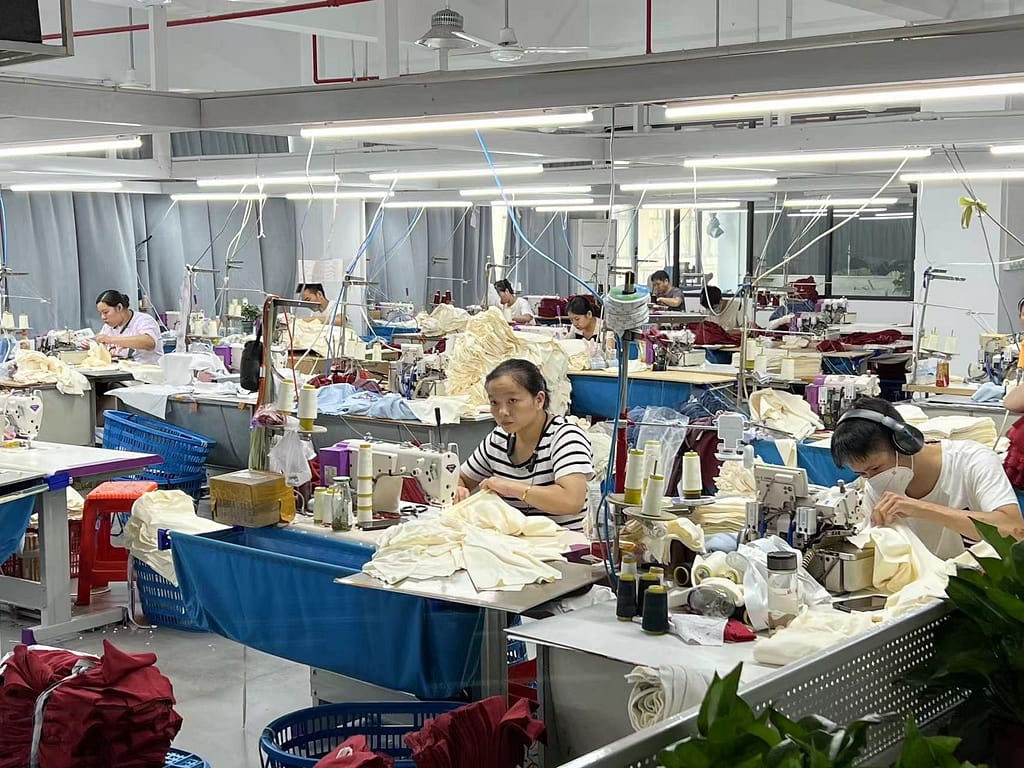
Bulk production begins once the final sample has been approved. At this stage, the focus shifts to scaling the manufacturing process to produce hundreds or even thousands of T-shirts while maintaining quality and adhering to tight deadlines. Efficient mass production relies on a well-organized system that ensures all aspects of the process—from cutting and sewing to quality control—are streamlined for large-scale output.
At Valtin Apparel, we operate five production lines, which allows us to handle large orders efficiently while keeping production timelines on track. Here’s how we prepare for mass production:
1. Material Procurement and Preparation
• After final approval of the sample, all necessary materials (fabrics, threads, labels, and any custom features) are sourced in bulk. Our proximity to China’s largest fabric market ensures that we can access these materials quickly and at competitive prices, keeping production costs low while maintaining quality.
• Once sourced, the materials are prepped for cutting, printing, and sewing in large quantities. This preparation step ensures that production can proceed smoothly without delays.
2. Optimizing the Production Line
• Each step of the production process—cutting, sewing, printing, and finishing—is carefully planned to maximize efficiency. For instance, automated cutting machines can handle multiple layers of fabric simultaneously, significantly speeding up the process while ensuring that each piece is cut consistently.
• Skilled workers and specialized equipment are used on each production line to handle specific tasks, ensuring high precision in sewing and applying custom features like embroidery or labels.
3. Production Schedule and Timeline Management
• A detailed production schedule is created, with clear milestones for each stage of manufacturing. This ensures that the entire process, from fabric cutting to final quality checks, stays on track. We aim to complete bulk production within 28-35 days, depending on the size and complexity of the order.
• Close coordination with clients helps to manage expectations regarding delivery timelines. Communication is key—our team keeps clients informed about progress throughout the production process to avoid any surprises or delays.
Quality Control During Bulk Production
Even in large-scale production, maintaining quality is essential to ensure consistency across all units. During bulk production, we continue to employ the same rigorous quality control measures used during the prototyping phase. Key quality checks include:
• In-Process Quality Checks: These occur during various stages of production to ensure that each batch meets the set standards for stitching, cutting accuracy, and printing quality.
• Final Batch Inspections: Before packaging, random samples from the batch are inspected for overall quality, ensuring that they meet the client’s specifications in terms of fit, construction, and finishing touches.
By incorporating quality control checkpoints into the mass production process, we reduce the risk of defective products making their way to the client. This consistency in quality is vital for brand owners who rely on their products to meet customer expectations and maintain brand reputation.
Managing Logistics: Timely Delivery and Shipping Coordination
Once the bulk production is complete, the focus shifts to logistics—packaging and delivering the finished products to the client. Efficient logistics are critical, especially for B2B clients who depend on timely deliveries to meet their own sales schedules and inventory demands.
At Valtin Apparel, we understand the importance of reliable logistics. We work with trusted shipping partners to ensure that the products arrive on time and in excellent condition. Here’s how we handle the logistics side of the manufacturing process:
1. Packaging for Shipping
• Once each T-shirt has passed its final inspection, it is carefully packaged for shipping. Whether it’s packed in branded polybags or bulk boxes, the packaging process ensures that the T-shirts are protected during transit and ready for sale upon arrival.
• For clients who require custom packaging, we ensure that all branded elements, such as tags, labels, and boxes, are correctly applied before the products are packed for shipment.
2. Shipping Coordination
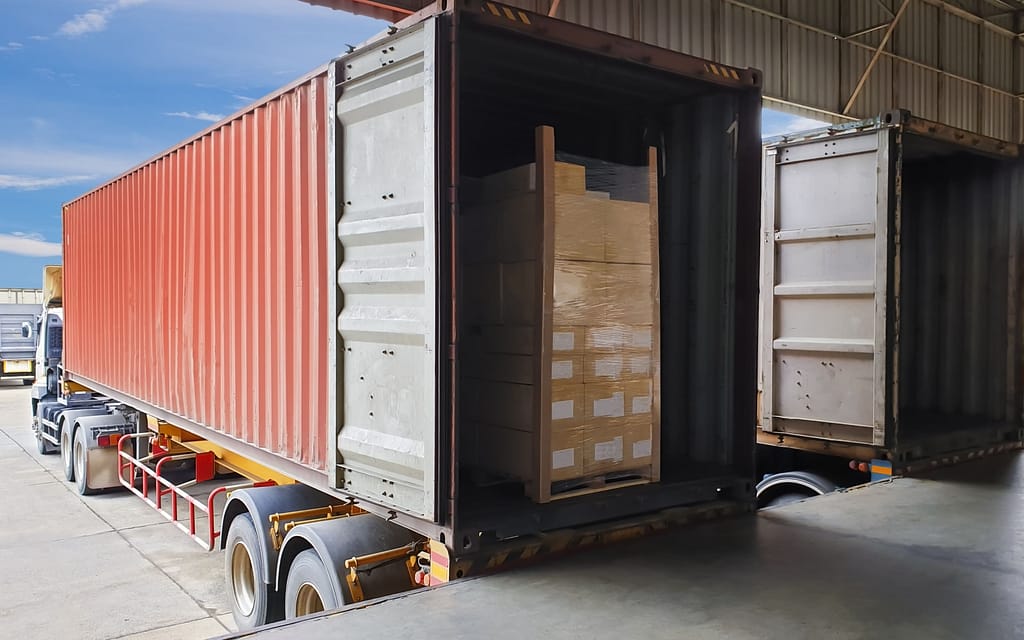
• We manage both domestic and international shipping logistics, depending on the client’s location. Our shipping partners are experienced in handling large orders, ensuring that T-shirts are delivered to the right destination, whether it’s a local warehouse or an international retail distributor.
• We coordinate closely with our clients to arrange the most efficient shipping method, whether by sea, air, or land. For larger orders, shipping by sea is often the most cost-effective option, although air shipping can be arranged for faster delivery when needed.
3. Customs and Import Regulations
• For international shipments, we handle the necessary customs documentation and import/export regulations to ensure that the process goes smoothly. This reduces the risk of delays at customs and ensures that the T-shirts arrive without complications.
• Our experience with exporting to markets like the UK, the US, Australia, and France means that we’re familiar with the specific regulations for each country, ensuring that all shipments comply with local laws and standards.
Communication with Clients Throughout the Process
Clear communication is essential in managing logistics, particularly when coordinating large orders for international clients. We keep clients updated on the status of their production and shipping schedule, providing regular updates and tracking information once the shipment is dispatched. This transparency helps clients plan for their inventory needs and avoid any disruptions in their sales operations.
At Valtin Apparel, we take pride in delivering high-quality products on time and without hassle. Our attention to detail throughout the logistics process ensures that every order is handled professionally, from the first cut of fabric to the final delivery.
Conclusion
Manufacturing a T-shirt that sells out isn’t just about creating a basic garment—it’s about perfecting each step of the process, from concept to delivery, ensuring quality and meeting market demands. At Valtin Apparel, we specialize in every aspect of T-shirt manufacturing, helping brands transform their ideas into high-quality products that not only meet customer expectations but also stand out in competitive markets.
Key Takeaways
1. Market Research and Design: It all starts with understanding your target audience and creating designs that resonate with current trends and customer preferences. Working with skilled designers to refine your ideas ensures a strong foundation for a successful product.
2. Sourcing Fabrics and Materials: Choosing the right fabric is crucial for comfort, durability, and appeal. Whether it’s premium cotton, sustainable materials like bamboo, or high-performance blends, the fabric choice must align with the product’s purpose and the customer’s expectations.
3. Pattern Making and Prototyping: Turning designs into reality requires precise pattern making and prototyping to ensure proper fit, style, and overall quality. This step allows for adjustments and improvements before mass production begins.
4. Cutting and Printing: Precision cutting and selecting the right printing techniques, such as screen printing, digital printing, or heat transfers, ensure that the T-shirt reflects the brand’s identity and meets the highest standards in quality and design.
5. Sewing and Quality Control: Skilled craftsmanship and rigorous quality control at every stage ensure that each T-shirt is consistently well-constructed and meets customer expectations for both durability and comfort.
6. Adding Labels, Tags, and Custom Features: Branding details such as labels, tags, and packaging, along with custom embellishments, add value and create a memorable experience for customers. These finishing touches are crucial in elevating a product from ordinary to outstanding.
7. Bulk Production and Logistics: Efficient production planning and reliable logistics management ensure that large orders are completed on time and shipped with care. Meeting deadlines and delivering consistent quality is key to maintaining client satisfaction and supporting retail operations.
Partnering with Valtin Apparel
For brands looking to launch a new T-shirt line or expand their existing offerings, partnering with a reliable manufacturer is critical to success. At Valtin Apparel, we bring years of experience and a commitment to quality to every project, ensuring that your products are manufactured to the highest standards. Our expertise in customization, bulk production, and international shipping makes us the perfect partner for brands seeking to deliver top-quality T-shirts to their customers around the world.
If you’re ready to manufacture T-shirts that sell out, we invite you to get in touch with us today. Whether you’re a new startup or an established brand, we’re here to help you through every step of the process—from design to delivery.

